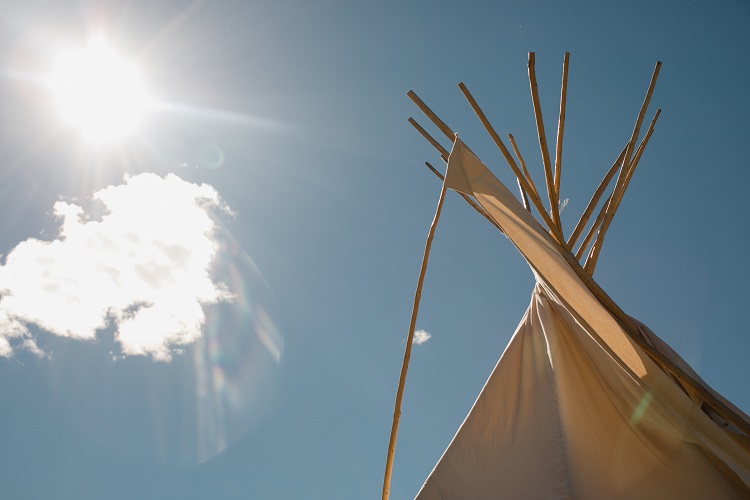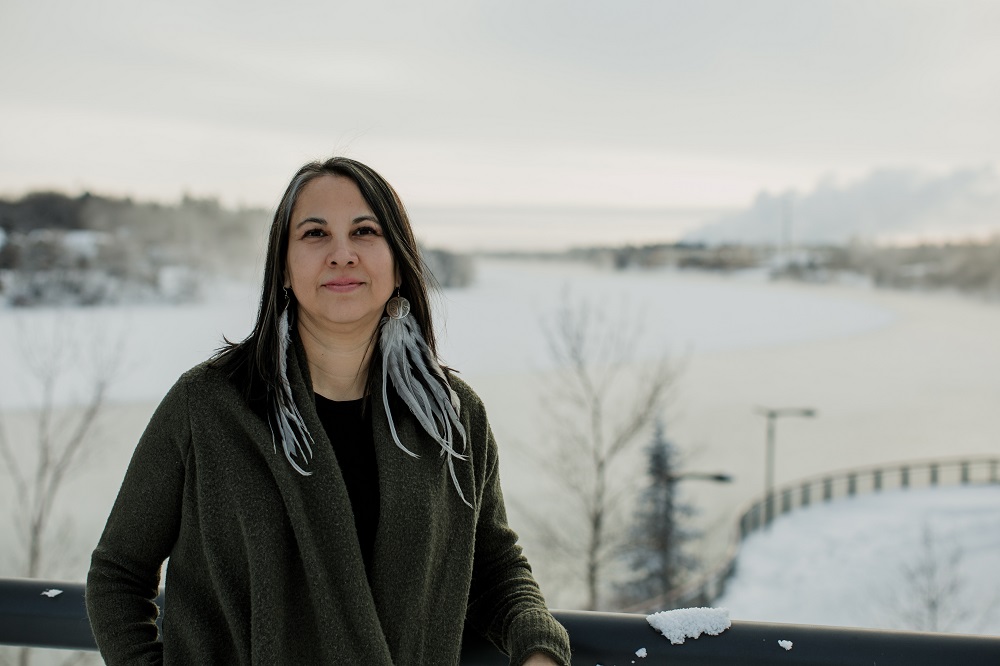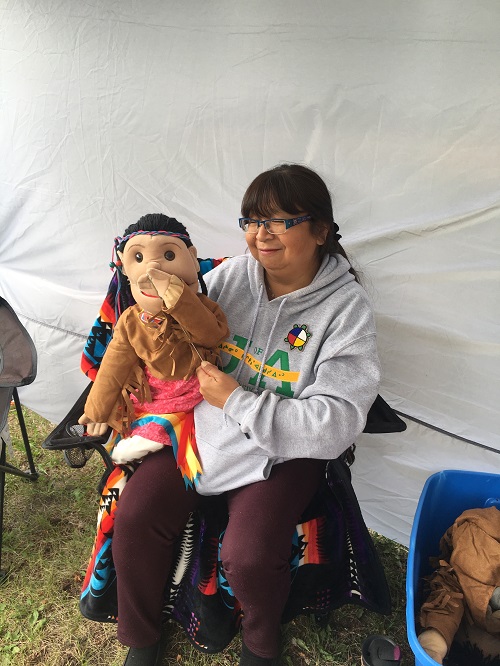
Learning nȇhiyawȇwin (Cree) is different than learning English. The language is not constructed on the noun-verb-object model; it is holistic and participatory, process-based and relational. Belinda Daniels recognized this when she founded the nȇhiyawak Summer Language Experience 14 years ago. “I wanted to understand ‘What does it mean to speak Cree?’ I was gathering the sense that language is connected to land.”
Participants camp in tipis and tents in locations such as Sturgeon Lake, Little Pine, La Ronge and Saskatoon. They learn through experiences on the land, such as collecting birch bark, tracking and snaring rabbits, and catching fish. “This is the original academy, the original place of learning for Indigenous peoples. It’s out on the land, out on the water,” says Daniels.
 The nȇhiyawȇwin immersion lessons are informed by language theorists and methodologists, with arts serving as one of the main catalysts for learning. Artists double as instructors, sharing their story-telling, craft-making and singing gifts. Cree is spoken while doing activities such as basket making, crafting hide, beading, sweetgrass braiding and jigging. “Each teacher or artist gets to share their techniques, their talents, through language,” Daniels says, noting that making some items may take the whole week. “It gives you a good sense of how labour-intensive it is to create these authentic pieces.”
The nȇhiyawȇwin immersion lessons are informed by language theorists and methodologists, with arts serving as one of the main catalysts for learning. Artists double as instructors, sharing their story-telling, craft-making and singing gifts. Cree is spoken while doing activities such as basket making, crafting hide, beading, sweetgrass braiding and jigging. “Each teacher or artist gets to share their techniques, their talents, through language,” Daniels says, noting that making some items may take the whole week. “It gives you a good sense of how labour-intensive it is to create these authentic pieces.”
In its first year, there were ten campers. Now around 30-40 people, including children, attend, with some returning each summer. By the end of the camp, which is funded by an Indigenous/Métis Art and Artists grant, participants understand nȇhiyaw philosophy, practices and beliefs and can tell a story in the nȇhiyawȇwin language confidently.
The experience creates a ripple effect. One person says, “This experience gave me many ideas as a Cree teacher. It helped me understand language learning from a student perspective and enabled me to learn from seasoned experts in teaching our language, all while creating a support for continued learning back home and in the community.”
 Participant Andrea Sterzuk says, “Cree is not my language, but this camp has definitely motivated me to continue learning. I am also working with some others to create a relaxed language circle group that can hopefully meet once a week.”
Participant Andrea Sterzuk says, “Cree is not my language, but this camp has definitely motivated me to continue learning. I am also working with some others to create a relaxed language circle group that can hopefully meet once a week.”
Over the years Daniels has noticed a change in attitude toward learning Cree. “There is a shift in the way that we as Indigenous people view ourselves and not through a colonial lens. People see that language is the fire. That has been the evolution, or the revolution, of people wanting to come and learn Cree. It’s been a long process. It’s been exciting.”
Photos:
Top: A teepee at the nȇhiyawak Summer Language Experience camp
Middle: Belinda Daniels
Bottom: A participant learns puppetry at the camp
Photos by Sweetmoon Photography
